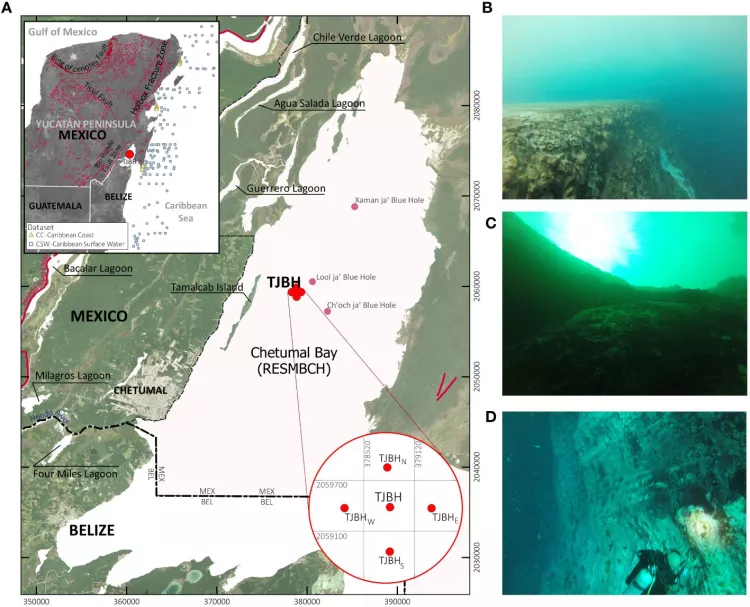World’s Deepest Ocean Sinkhole

Sinkholes occur not just on land but also underwater, where they are known as blue holes. Researchers have now identified the deepest blue hole on the planet, so deep they have not yet reached the bottom.
This discovery is the Taam Ja’ Blue Hole in Mexico’s Chetumal Bay, previously considered the world’s second-deepest. Researchers reported in the journal Frontiers in Marine Science that a December scuba diving expedition revealed it to be much deeper than initially thought.
“The TJBH is now the deepest blue hole discovered to date, with depths exceeding 420 meters below sea level, and the bottom remains unexplored,” the researchers stated. This new depth, over a quarter-mile below sea level, extends into the mesopelagic zone, also known as the twilight zone due to the limited sunlight.
Earlier estimates placed Taam Ja’s depth at approximately 274 meters below sea level, based on echo sounding, which measures the distance sound waves travel. However, the irregular shapes of blue holes and varying water densities limited this method. The latest measurements, using the SWiFT CTD technique to gauge conductivity, temperature, and depth, indicated the bottom was still beyond reach.
This new depth makes Taam Ja’ significantly deeper than other known blue holes, such as the Sansha Yongle Blue Hole in the South China Sea (301 meters), the Dean’s Blue Hole in the Bahamas (202 meters), and the Dahab Blue Hole in Egypt (130 meters).
While blue holes might seem ominous, the NOAA describes them as “oasis in an otherwise barren seafloor,” teeming with marine life like corals, sponges, mollusks, sea turtles, and sharks. Despite their ecological richness, little is known about blue holes due to their inaccessibility and unpredictable distribution.
Many blue holes have small openings deep underwater, making them difficult for automated submersibles to enter. Initial reports of blue holes often came from fishermen and recreational divers rather than scientists.